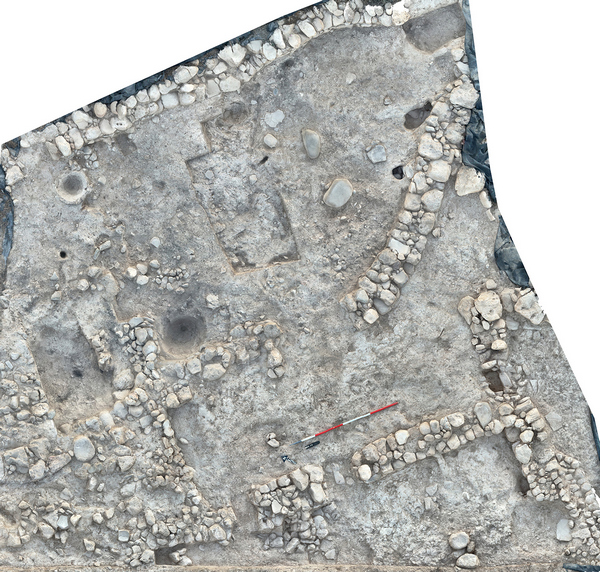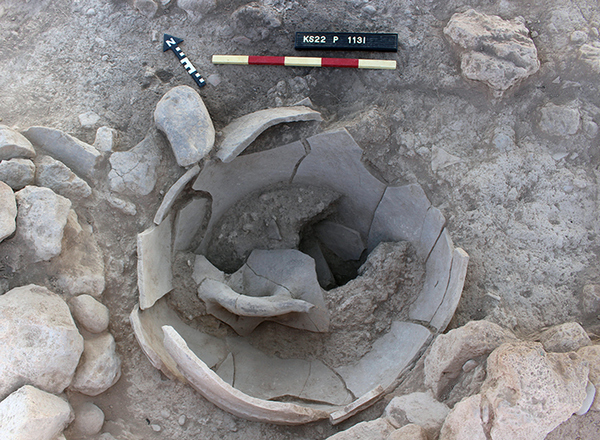Press Releases

25-11-2022 15:57
The archaeological excavations at Kissonerga-Skalia of 2022 was completed
The Department of Antiquities, of the Ministry of Transport, Communications and Works, announces the completion of the 2022 season of archaeological excavations at the Bronze Age settlement of Kissonerga-Skalia near Paphos, under the direction of Dr Lindy Crewe (Director, Cyprus American Archaeological Research Institute). The site demonstrates a long Bronze Age sequence, and evidence for earlier Chalcolithic occupation, beginning before 2,500 BC and connected with the neighbouring Neolithic–Philia phase settlement of Kissonerga-Mosphilia. The site was abandoned around 1600 BC, during the transition to the Late Cypriot Bronze Age.
Investigations at the site have shown that the village at Kissonerga-Skalia was established during the initial ‘Philia’ phase of the Bronze Age, around 2500 BC, and became a flourishing community until near the end of the Middle Bronze Age, around 1750 BC. At this time, the earlier domestic structures were abandoned and a large-scale building programme took place, demolishing earlier structures to create a building area of at least 1200 m2. A new series of large walls up to 1.2 m wide on various alignments were constructed, creating a series of open courtyards and roofed areas connected by trampled mud or plaster floors. This has been named the ‘Final Phase Complex’ and may have only been occupied for a few generations before being abandoned permanently around 1600 BC. The complex has no evidence for domestic occupation and activities seem to be industrial, including large fire-related installations and areas for grinding and processing materials, along with several storage vessels.
During the 2022 season the team further exposed the remains associated with the use of the complex. There are at least two phases of construction and refurbishment and it is likely that we are seeing a decline in the site, with a decrease in activities and perhaps a slow abandonment in some areas with possible violent destruction in others.
Figure 1 shows the northern area (Area P/B2) with two walls running approximately parallel and forming a contained space, with a corridor leading to an additional courtyard previously investigated. On the interior faces of both walls, we find wall tumble and collapse, suggesting that this area may have been roofed and as the roof collapsed both walls were drawn inwards. This collapse was further investigated in 2022, exposing a further area of working spaces with whole pots smashed under the collapse, suggesting that here we are dealing with a sudden destruction, rather than abandonment after the users of the building had time to remove their possessions. In the top right corner of Figure 1, an interesting mirrored arrangement of two large stone grinders is visible, accompanied by two stone platforms for supporting a post or a vessel and two small ash-filled pits or postholes. An inbuilt mortar or pot stand lies in the top left and an embedded pithos was retrieved in the hole shown in the centre of Figure 1. The pithos, which would have been about 1.2m high, is shown under excavation in Figure 2 and is of an unusual style, placing it around the end of the Middle Bronze Age. Given that there were rim sherds and one handle found in the lower base it seems to have been empty or contained only liquid when it was smashed.
Kissonerga-Skalia is an example of a phenomenon that occurs at the transition to the Late Bronze Age where people began to build big and produce goods at a greater scale at a time when seaborne trade was flourishing in the Mediterranean. As the site was abandoned shortly after the complex was built and the remains are not obscured by later human activity we are able to examine this phenomenon in detail.
Figure 1: Area P/B at the end of the excavation season.

Figure 2: A Middle Cypriot pithos crushed by wall collapse under excavation in Area P/B.

(TG/MH/SCH)
Relevant Press Releases



